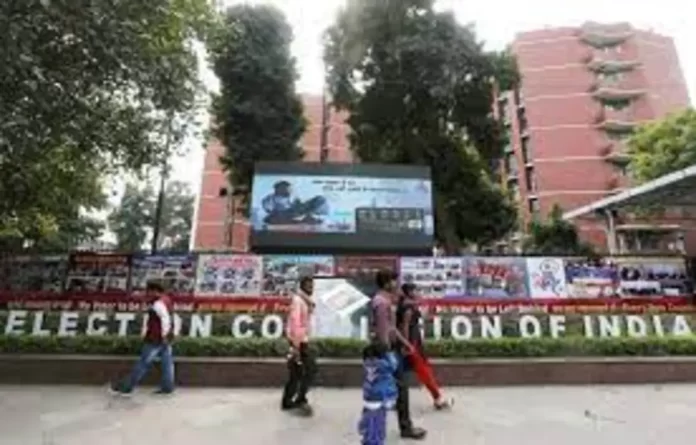The Supreme Court on Monday sought the response of the Election Commission of India (ECI) on a plea raising the issue of duplicate voter entries in electoral rolls.
A bench comprising Chief Justice of India, DY Chandrachud, Justice J B Pardiwala and Justice Manoj Mishra posed two specific questions regarding the deletion of duplicate entries from the electoral rolls.
The bench asked Advocate Amit Sharma, representing the Election Commission, how does the ECI determine that certain are duplicate and how does information about the death of a voter come to the ECI. The apex court was hearing a petition filed by Samvidhan Bachao Trust, an NGO who is raising the issue of duplicate voter entries.
Responding to the bench, Amit Sharma informed the bench that the final electoral rolls will be published by February 8, 2024. Following, the Chief Justice of India asked Amit Sharma to give a break on the number of persons who have been finally identified as dead and shifted residence and deleted from duplication thereafter.
Appearing for the petitioner, Senior Advocate Meenakshi Arora underlined that the main matter is when the Chief Electoral Officer issues notices to all his district collector officers to carry out the process, he mentions the deletion of the names of the dead and those who have shifted, but he do not mention about the duplication at all. She added that the Election Commission has not addressed the issue in their counter-affidavit.
The Senior Advocate explained to the top court about the process of de-duplication, wherein through computerization duplicate entries are caught which have been entered into the electoral roll. She added that there have been cases where just before the election process also, the courts have directed them to carry out the de-duplication also. Expressing their grievances, she said that instructions need to be implemented on the ground.
Taking into consideration, the Supreme Court directed the Election Commission to file its response with regards to the issue of non-mentioning of duplication in the data collection by the district officers and the presence of voters’ names who are dead, shifted or have practically similar entries is more than the actual number of persons.


